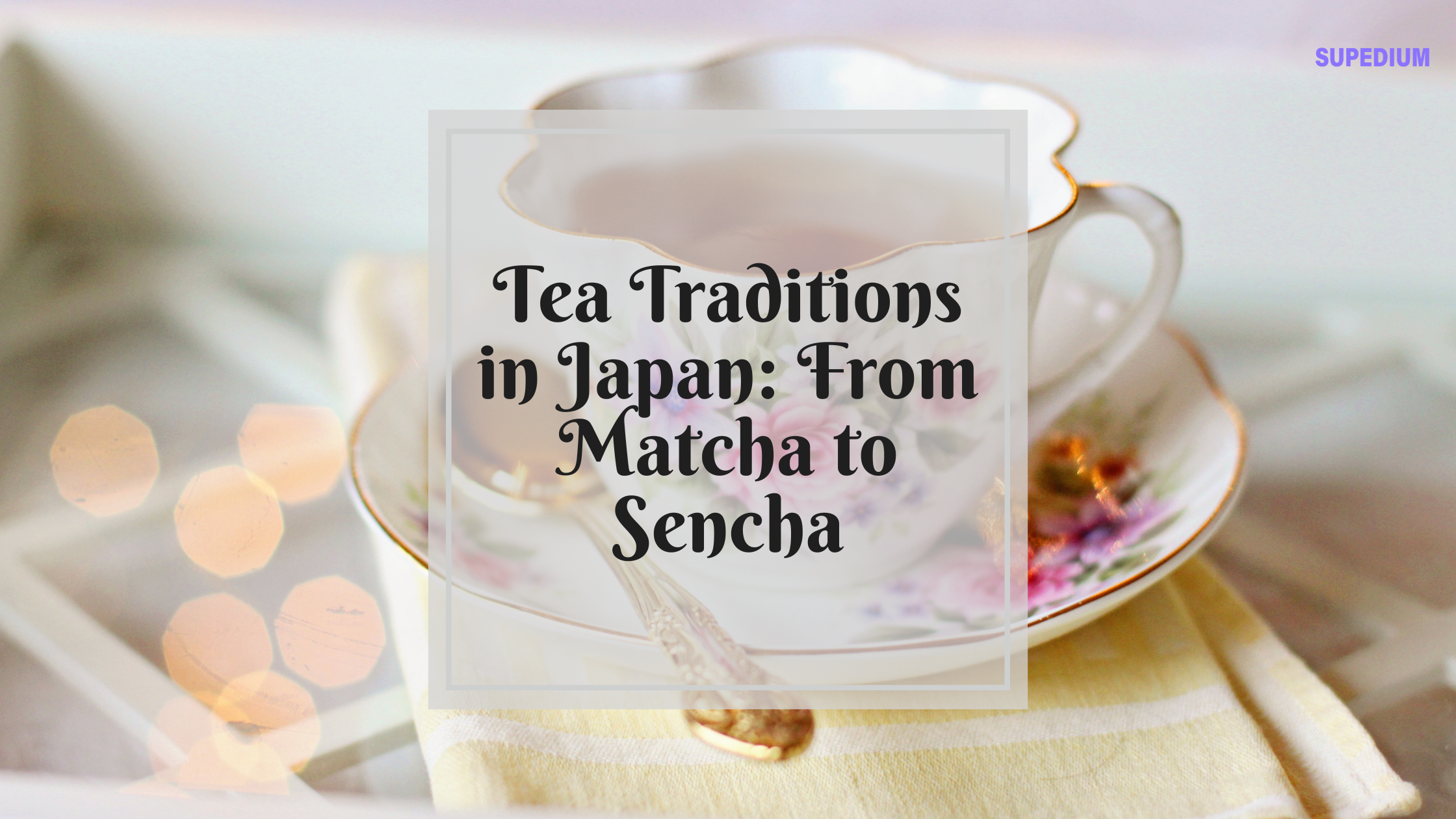Table of Contents
![]()
Japan’s tea culture is an intricate tapestry of history, artistry, and daily practice, with tea serving as a cornerstone of social and spiritual life. This article explores the profound significance of tea in Japan, focusing on two prominent varieties: Matcha and Sencha. By examining their history, preparation, and cultural roles, we gain a deeper understanding of Japanese tea traditions.
Historical Background
Tea’s journey to Japan began in the early 9th century, introduced from China by Japanese monks and envoys. The Heian period marked the beginning of tea cultivation in Japan, and tea quickly became integrated into Japanese life. Zen Buddhism played a crucial role in this process; Zen monks used tea to stay alert during long meditation sessions, and their appreciation for tea contributed to its growing significance.
The tea ceremony, or Chanoyu, emerged during the Muromachi period (14th-16th centuries). Influential figures such as Sen no Rikyū refined the practice, emphasizing simplicity, mindfulness, and the beauty of the tea experience. This period saw the formalization of the tea ceremony, shaping the way tea is enjoyed in Japan today.
Types of Japanese Tea
Matcha and Sencha are two of the most prominent types of Japanese tea, each with distinct characteristics and cultural significance.
Matcha
Matcha is a finely ground powder made from specially grown green tea leaves. Unlike other teas, Matcha involves consuming the whole leaf, which gives it a vibrant green color and rich, umami flavor. The cultivation of Matcha involves shading the tea plants for several weeks before harvest, which enhances the chlorophyll content and gives Matcha its unique flavor profile.
The production of Matcha involves several steps. After harvesting, the leaves are steamed to prevent oxidation, dried, and then ground into a fine powder using traditional stone mills. This process ensures the preservation of the tea’s delicate flavors and nutrients.
Matcha is most famously associated with the Japanese tea ceremony. Chanoyu is a ritualistic practice that embodies the principles of harmony, respect, purity, and tranquility. During the ceremony, Matcha is whisked with hot water to create a frothy, aromatic drink. The ceremony is not only about drinking tea but also about the aesthetics of the preparation and the meditative experience.
Sencha
Sencha, on the other hand, is a whole-leaf green tea that is steamed, rolled, and dried. This process preserves the fresh, grassy flavors of the tea and gives it a vibrant green color. Unlike Matcha, which is powdered, Sencha leaves are brewed in hot water, resulting in a clear, golden-green tea.
The production of Sencha begins with steaming the freshly picked leaves to halt oxidation, which helps retain the tea’s green color and fresh flavor. The leaves are then rolled and dried, creating a finished tea that can be brewed to varying strengths depending on personal preference.
Sencha is a staple of daily life in Japan and is enjoyed both at home and in public settings. It is commonly served during meals and social gatherings and is appreciated for its refreshing taste and health benefits. Unlike the ceremonial Matcha, Sencha is typically prepared in a more straightforward manner, reflecting its role as a daily beverage.
Tea Ceremonies and Rituals
Chanoyu, or the Japanese tea ceremony, is a highly ritualized practice that exemplifies the spiritual and cultural significance of tea in Japan. The ceremony involves the meticulous preparation of Matcha, with a focus on the aesthetic and philosophical aspects of tea drinking. Participants are guided by the principles of wabi-sabi, which emphasize the beauty of simplicity and imperfection.
The tea ceremony is characterized by its precise movements and the use of traditional utensils, including the chawan (tea bowl), chasen (bamboo whisk), and chashaku (tea scoop). Each movement and gesture is performed with intention, reflecting the values of mindfulness and respect.
In contrast, everyday tea drinking practices with Sencha are more informal. Preparing Sencha typically involves steeping the tea leaves in hot water, with varying steeping times to adjust the flavor strength. This everyday ritual reflects the tea’s role as a daily companion rather than a ceremonial centerpiece.
Regional Variations and Unique Practices
Japan’s diverse climate and geography contribute to a variety of regional tea practices and unique tea types. Famous tea-growing regions such as Uji (Kyoto), Shizuoka, and Kagoshima produce distinctive teas with regional characteristics.
In Uji, renowned for its high-quality Matcha, traditional cultivation and production techniques are preserved, resulting in tea with a rich, complex flavor. Shizuoka, one of Japan’s largest tea-growing regions, is known for its Sencha, which varies in flavor and aroma depending on the specific processing methods used. Kagoshima, located in southern Japan, produces a range of teas, including unique varieties of Sencha with distinct flavors.
Local traditions and innovations also play a role in Japanese tea culture. Regional tea ceremonies may incorporate local customs and variations, while modern adaptations of tea practices continue to evolve, blending traditional techniques with contemporary influences.
Contemporary Trends and Global Influence
In recent years, Japanese tea culture has experienced both innovation and globalization. Modern developments in tea production include advancements in cultivation techniques and the introduction of new flavors and blends. Japanese tea has also gained international popularity, with increasing export and integration into global cuisine.
Japanese tea is now enjoyed worldwide, with specialty tea shops and international restaurants incorporating it into their offerings. This global appreciation highlights the enduring appeal and versatility of Japanese tea, from its traditional roots to contemporary adaptations.
Conclusion
Tea remains a vital part of Japanese culture, with Matcha and Sencha representing two distinct aspects of this rich tradition. Matcha’s ceremonial role and Sencha’s everyday presence reflect the diverse ways in which tea is celebrated and enjoyed in Japan. As Japanese tea traditions continue to evolve and influence global tea culture, they offer a window into the values and aesthetics that shape Japanese society.
Share This





Be the first to comment